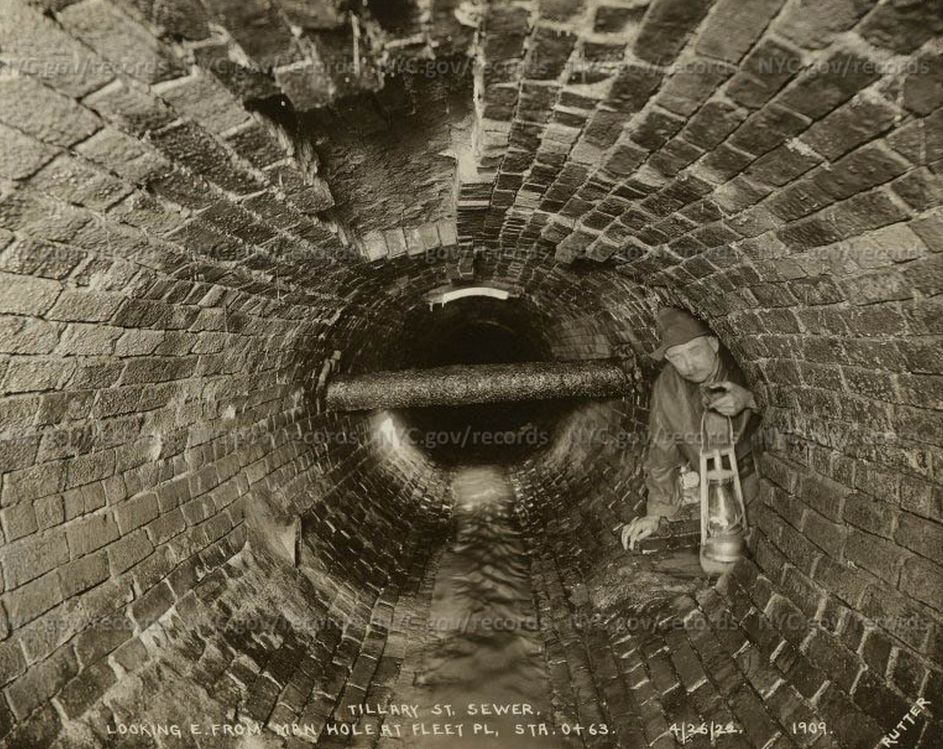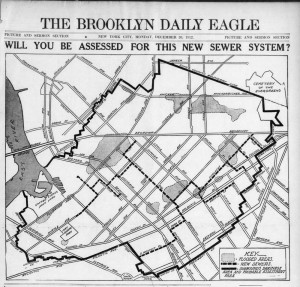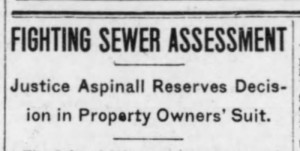DID YOUR BROOKLYN STREET FLOOD? (1912)

Brownstone Detectives investigates the history of our clients’ homes.
The story you are about to read was composed from research conducted in the course of one of those investigations.
Do you know the history of YOUR house?
********************************************************************************************************************************
By 1912, Brooklyn was drowning in rain water.
The borough, by then, had installed so many more miles of cobblestone, macadam, and otherwise improved roads – than at any time in its past – that many of its streets would flood at the very hint of precipitation.

In 1903, for example, the flooding was so bad that the Brooklyn Daily Eagle reported that “All the residences along Hancock, McDonough, Macon, Decatur, Bainbridge and Chauncey Streets were so flooded that residents on the ground floor apartments discovered upon waking that they were forced to go to the second floors to escape the waters.”
The paths in Saratoga Park, according to one newspaper account, “had become running streams and benches were floating about.” The nearby Putnam and Halsey streetcars stopped running, as “it was impossible to take on any passengers, as the water was as high as the seats.”
Thus, there finally came such an outcry from residents, who lived on the streets most prone to flooding, that the City decided to introduce more sewer lines to catch that water.
At that time, to get an idea of what they were dealing with, the city sent out a small army of surveyors to gauge the lower lying areas of the city, so that the sewers could be best positioned to capture and carry that water away from the neighborhoods and down to the bay where it could be deposited.
CHECK, PLEASE!

Of course, someone had to pay for those sewers, which involved everything from surveying the work to be done, purchasing the materials, hiring the contractors, digging up the streets themselves, laying the sewer lines, and then relaying or repaving the roadways.
After a careful study of expected costs, the city was estimating that the numbers could equal assessments on residents as high as $25 per 20-foot lot and as low as $5 per lot. The overall price tag, though, was expected to reach the princely sum of $2,400,000 ($58M in today’s money).
And, as could be expected, once word got out about the sum total of the bill and how the city planned to divvy that up amongst its residents, there was Holy Hell to pay.
LAWSUITS!
Citizens’ lawsuits against the City began popping up everywhere challenging these assessments. Those residents furthest from the flooding, it can be imagined, felt the least need to pay, while those most affected could not shoulder the burden alone. The sewers, though, it was argued, would help everyone and would end up snaking throughout many parts of the borough.
One Bushwick litigant group called the assessments “unjust, excessive, inequitable, illegal and void” because “their properties were taken well care of by sewers already built.”
No one was happy and everyone expected they were going to be asked to pay more than those from other sections of town.
The Brooklyn Daily Eagle jumped into the fray and added grist for the mill that year by showing everyone where those sewers were going to be laid and, additionally, where the worst flooding was. They topped their map with the question:
———————————————————————————————————————–
 Brownstone Detectives is an historic property research agency. Our mission is to document and save the histories of our clients’ homes. From our research, we produce our celebrated House History Books and House History Reports. Contact us today to begin discovering the history of your home.
Brownstone Detectives is an historic property research agency. Our mission is to document and save the histories of our clients’ homes. From our research, we produce our celebrated House History Books and House History Reports. Contact us today to begin discovering the history of your home.